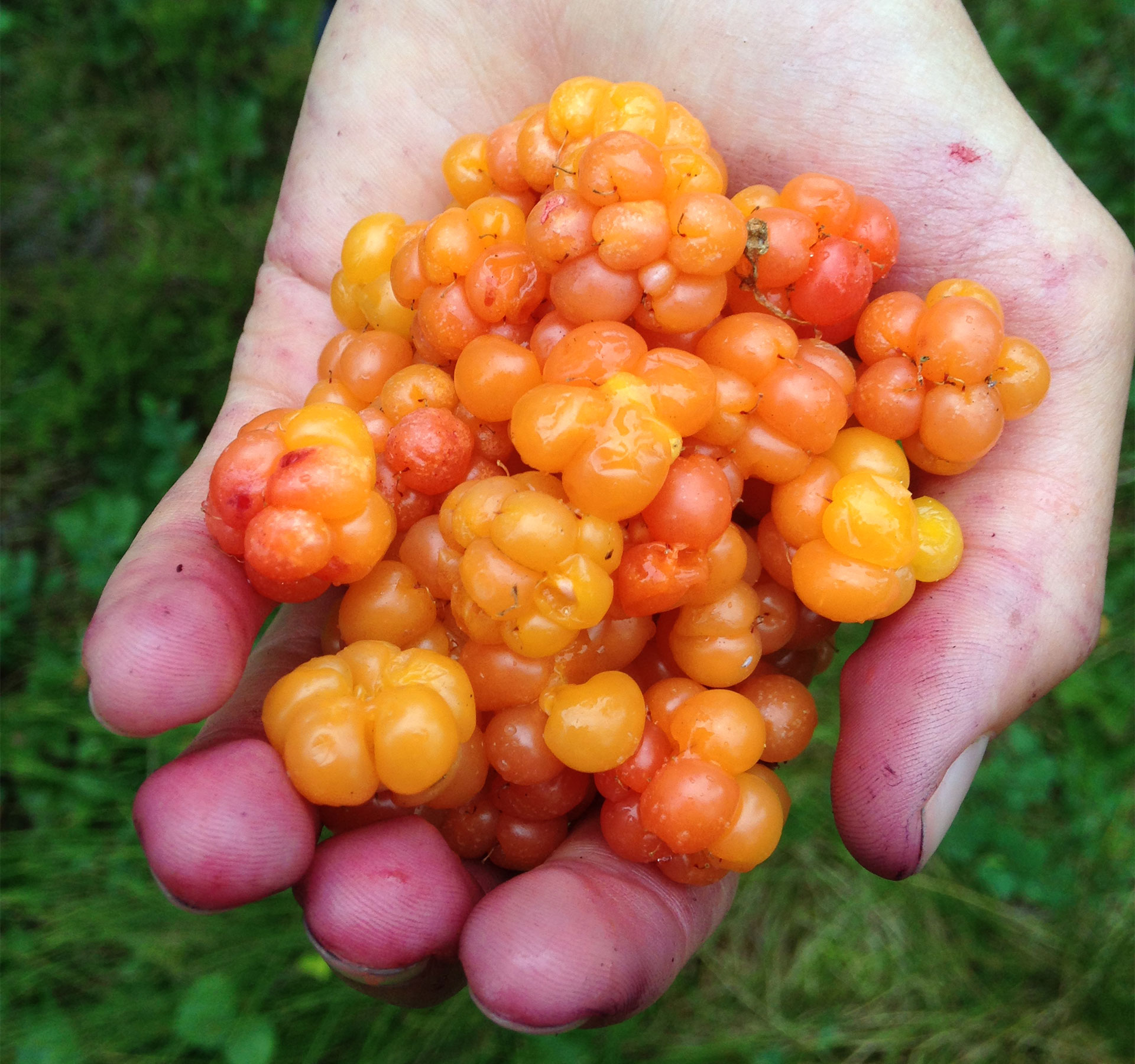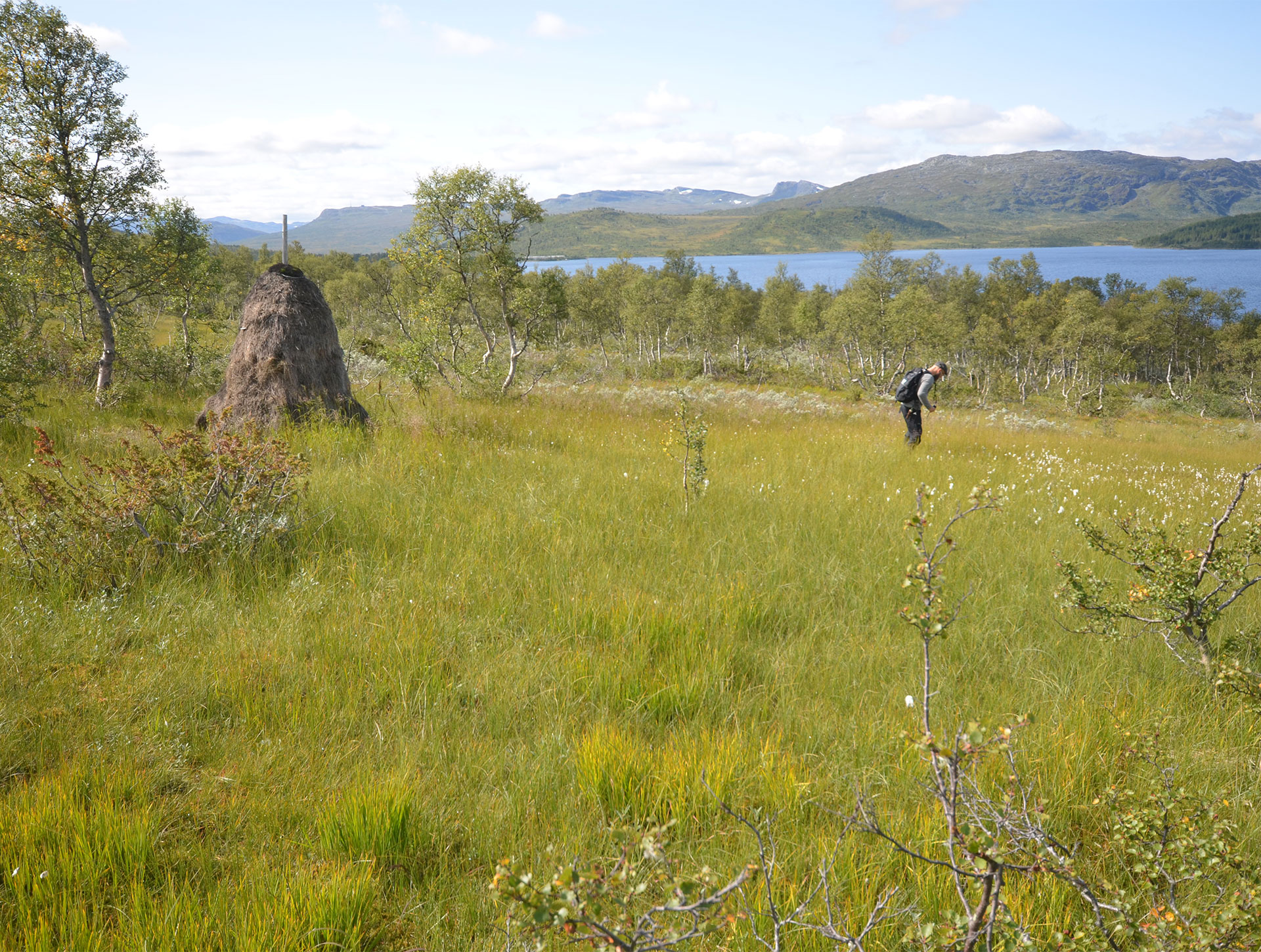Background for protection and threats
Hovden Protected Landscape was protected to safeguard large interconnected marshlands that include many different types of marsh. This is a place where visitors will also find distinctive traces from the last Ice Age such as terraces, moraines and kettle holes. A kettle hole is a depression in the landscape that was formed when a block of ice left behind by a retreating glacier was buried and later melted. Some kettle holes are totally dry, but the majority of them have become small lakes or have a marsh at the bottom. The distinctive landscape formations are of great value to teaching and research. There are no major threats to the marshland areas or the distinctive landscape formations mentioned in the protection objective. Over the years, many spruce trees have been planted in Hovden Protected Landscape. Today, however, these trees have been felled and removed. Aftergrowth was removed manually. Wild reindeer are not part of the protection objective, but Hovden Protected Landscape is an important winter grazing area for the wild reindeer. It is also the migratory area between Setesdal Austhei and Setesdal Ryfylke Wild Reindeer Area. Human traffic from the cabin area at Hovden as well as motorized traffic on the Rv 9 road has resulted in the wild reindeer not using this migratory area between the eastern and western hills as much as they used to.
Plant life and wildlife
The vegetation in Hovden Protected Landscape varies from rich birch forests to more barren marshland and ridges the higher you get in the terrain. The areas along the rivers and streams are especially nutrient-rich and are home to many plants. Purple gentian, the municipal flower of Bykle, can be found in many places in the protected area. Hovden Protected Landscape is rich in wildlife and birdlife. The protected landscape is the only place in Agder County that has a population of long-tailed skuas. The Lapland bunting is also a species you might encounter, a species that is not so common in other places in Agder. Other characteristic birds are bluethroats, great snipes and common reed buntings. The protected landscape also provides good habitat for willow ptarmigan, despite the fact that the population fluctuates a lot from year to year. Both reindeer and moose are examples of the lager mammals that can be found in the protected area. The reindeer belong to the herd that comes from the Setesdal Austhei Wild Reindeer Area. The reindeer find good winter grazing grounds in Hovden Protected Landscape. There is plenty of star-tipped cup lichen and crinkled snow lichen for them to eat, both of which are not very prevalent at Austhei. The protected landscape also has important exchange areas with the Setesdal Ryfylke Wild Reindeer Area in the west. Read more about wild reindeer

Past use of the area
Domesticated reindeer husbandry took place in Bykle between 1820 and 1978. It was originally started by Sámi people who came from Helgeland, Jamtland and Vesterbotten in Sweden. After a while, local villagers took over with the help of the Sámi people during the whole herding period. Traces of reindeer herding can still be found in Hovden Protected Landscape, such as in between the two cabins at Auersvatn lake and Hemlehytta cabin. In 1979, the reindeer at Setesdal Austhei were given wild reindeer status. The grass on many of the marshes was cut to make hay. This fodder played a crucial role in keeping the livestock alive throughout the winter. The hay was mainly stored in hay barns or gathered into stacks and then driven back to the farm by horse and cart before winter set in. From the Viking Age to the Middle Ages, there was a large iron industry at Hovden. Today, remnants of this industry in the form of coal pits and iron production sites are automatically protected cultural monuments. Approximately 50 coal pits and 15 iron production sites have been found in Hovden Protected Landscape. A lot of firewood was needed to produce the iron, and this has affected how the landscape and vegetation looks today.

Current use
During winter, there are several groomed ski trails in Hovden Protected Landscape. In march, the Hovden Tour ski competition and winter golf is held. Some of the Hovden Ultra route runs through Hovden Protected Landscape.
The Tjørnbråtbu tourist cabin is located in the far south of the protected area. There is a waymarked summer and winter trail from the cabin that runs south to Berdalsbu or west to Hovden. Heading north, the trail leads to Bjåen and further on to Haukeliseter. There is a gravel road running from highway Rv. 9 towards Galten. The road is closed to general traffic but still offers a nice hiking or cycling trip.
Ptarmigan, reindeer and moose hunting takes place every autumn in Hovden Protected Landscape. Both hunting license tests and bird dog courses are held in the area.

